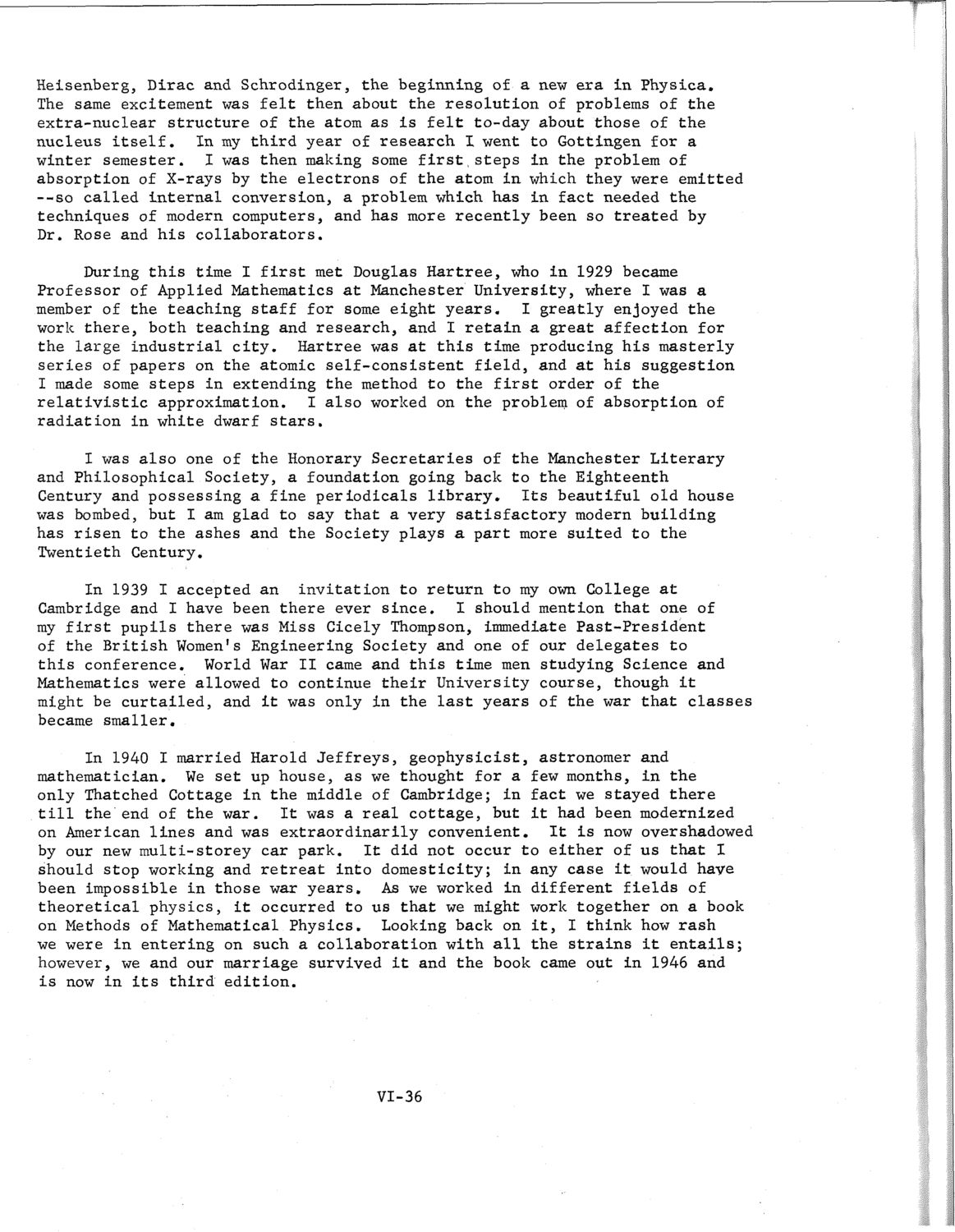| |
| |
Caption: SWE - Proceedings of the First International Conference of Women Engineers and Scientists
This is a reduced-resolution page image for fast online browsing.

EXTRACTED TEXT FROM PAGE:
Heisenberg, Dirac and Schrodinger, the beginning of a new era in Physica. The same excitement was felt then about the resolution of problems of the extra-nuclear structure of the atom as is felt to-day about those of the nucleus itself. In my third year of research I went to Gottingen for a winter semester. I was then making some first steps in the problem of absorption of X-rays by the electrons of the atom in which they were emitted --so called internal conversion, a problem which has in fact needed the techniques of modern computers, and has more recently been so treated by Dr. Rose and his collaborators. During this time I first met Douglas Hartree, who in 1929 became Professor of Applied Mathematics at Manchester University, where I was a member of the teaching staff for some eight years. I greatly enjoyed the work there, both teaching and research, and I retain a great affection for the large industrial city. Hartree was at this time producing his masterly series of papers on the atomic self-consistent field, and at his suggestion I made some steps in extending the method to the first order of the relativistic approximation. I also worked on the problem of absorption of radiation in white dwarf stars. I was also one of the Honorary Secretaries of the Manchester Literary and Philosophical Society, a foundation going back to the Eighteenth Century and possessing a fine periodicals library. Its beautiful old house was bombed, but I am glad to say that a very satisfactory modern building has risen to the ashes and the Society plays a. part more suited to the Twentieth Century. In 1939 I accepted an invitation to return to my own College at Cambridge and I have been there ever since. I should mention that one of my first pupils there was Miss Cicely Thompson, immediate Past-President of the British Women's Engineering Society and one of our delegates to this conference. World War II came and this time men studying Science and Mathematics were allowed to continue their University course, though it might be curtailed, and it was only in the last years of the war that classes became smaller. In 1940 I married Harold Jeffreys, geophysicist, astronomer and mathematician. We set up house, as we thought for a few months, in the only Thatched Cottage in the middle of Cambridge; in fact we stayed there till the end of the war. It was a real cottage, but it had been modernized on American lines and was extraordinarily convenient. It is now overshadowed by our new multi-storey car park. It did not occur to either of us that I should stop working and retreat into domesticity; in any case it would have been impossible in those war years. As we worked in different fields of theoretical physics, it occurred to us that we might work together on a book on Methods of Mathematical Physics. Looking back on it, I think how rash we were in entering on such a collaboration with all the strains it entails; however, we and our marriage survived it and the book came out in 1946 and is now in its third edition. VI-36
| |